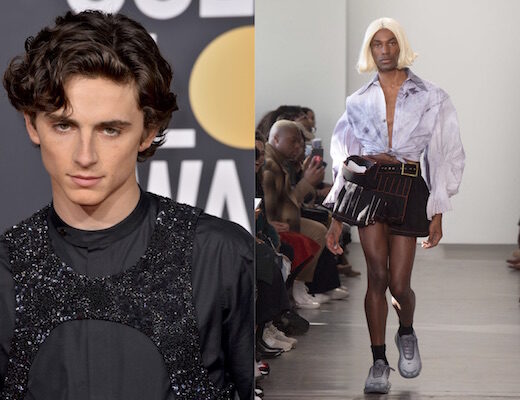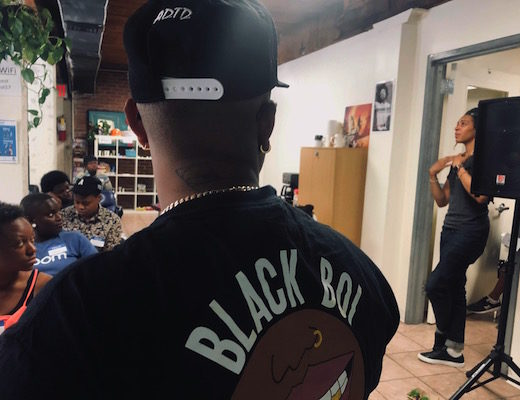by Athena Naylor
This article was first published on The DC Line and can be read on their website here.
An expansive new exhibit at American University’s Katzen Arts Center offers a survey of contemporary sculpture and photographs through works donated by lobbyist and internationally influential art collector Tony Podesta — including many originally given to the Corcoran Gallery of Art.
The Gifts of Tony Podesta— on display at the American University Museum through March 17 — highlights the work of 26 artists while celebrating Podesta’s aesthetic eye.
The exhibit, the first major show drawn from American University’s Corcoran Legacy Collection, takes up two floors of the museum. It showcases items from the holdings bestowed to American when the Corcoran was folded into The George Washington University in 2014, along with work that Podesta has donated directly within the past five years.
Podesta has been a longtime champion of contemporary female artists. The Katzen’s last show featuring his collection — 2011’s Inner Piece: Works From the Heather and Tony Podesta Collection — focused specifically on this aspect of his holdings, displaying the work of four notable women photographers and painters. The Gifts of Tony Podesta offers a broader exploration of his collection.
Photography steals the show in The Gifts of Tony Podesta, comprising the majority of items on display. Jennifer Sakai, an art professor at George Washington who curated the photographic portion of the exhibit, remarks in wall signage how Podesta’s photographic collection “creates beguiling and mysterious narratives.” Almost all the photography included in Gifts provides some sense of story, often creating visual tension through the incorporation of both familiar and unexpected narratives.
One of the first pieces the viewer encounters in Gifts is Mwangi Hutter’s If, a 50-inch-by-66-inch chromogenic print that displays a disorientingscene. The 2003 photograph is based off a propaganda image of Hitler, in which he is depicted surrounded by a cluster of “ideal” Aryan women. Mwangi Hutter, an artistic collective made up of partners Ingrid Mwangi and Robert Hutter, reimagines this scene, placing a superimposition on Hitler’s face and replacing the women with repeated images of Ingrid Mwangistaring at the Hitler stand-in, toward the camera or off to the side. Her clones wear different outfits, take on different gestures and crowd the image. The viewer feels invited into this grouping that explores the layered racial and historical dynamics of Mwangi Hutter’s identity-focused art practice.
If introduces the viewer to the kind of decoding required of many of the narratives featured in Gifts, as multiple photographs in the show consider decontextualized stories and subverted archetypes. Prints by Anna Gaskell, a contemporary photographer whose work often references gothic fiction and fairy tales, place viewers in the middle of unexplained stories. In Gaskell’s 1998 print Untitled #44 (Hide), a limp, wet hand lays in a puddle on a hardwood floor, while in Untitled #47 (Hide) from the same year, a blond girl in white pins down a possible doppelganger in a shot from above that obscures both characters’ faces, offering snippets of a longer narrative at which viewers can only guess.
Even in works not so figuratively focused, there is a sense of narrative sequence. A standout inclusion is Darren Almond’s Six Months Later, a 24-part piece composed of 1,440 tiny photographs that depict the artist’s studio minute by minute over the course of 24 hours. In this 1999 work, the viewer can track the passage of time via the black digital clock on the wall of each identically composed shot, which differ onlyin the quality of light shining through the scene as the day progresses. These small, incremental photographs form a monumental installation, creating a simultaneously intimate and imposing portrait of time.
The sculptural portion of The Gifts of Tony Podesta, coordinated by Klaus Ottmann, chief curator of the Phillips Collection, simultaneously seems to connect and diverge thematically from the photographic work presented.
A highlight of the sculpture in the show is artistic duo Jake and Dinos Chapman’s 1999 Rape of Creativity, a miniature diorama that depicts a man who has chopped off his own hand (one assumes accidentally) while carving a female wooden torso from a log. The diorama delights with remarkably minute details, such as the miniscule beer bottles visible when one peers inside the man’s tiny RV. Circling the small scene, one notices a dog with a sheep’s head carrying the man’s dismembered hand in its mouth. The play between mundane familiarity and surreality within the scene clearly relates The Rape of Creativity to the kinds of beguiling narratives offered by the photography in the rest of the show.
A similar sense of surreal narrative permeates the work of Australian artist Patricia Piccinini, whose installation Siren Mole: Excellocephala Parthenopa from 2000 is an animatronic sculpture of two imagined creatures in a glass enclosure like those commonly found in biology labs. Swedish artist Ann-Sofi Sidén’s fountain Fideicommissum offers another figural sculpture for the show, depicting a self-portrait of the artist urinating that makes the viewer aware of one’s body and privacy. The peeing woman’s eyes are closed, positioning the viewer as a voyeur. However, when squatting to admire the sculpture, we find ourselves in the same peeing position as Sidén, transforming us from a distanced observer into a self-conscious, vicarious participant.
Other sculptural selections — such as Jone Kvie’s Untitled globular stainless steel mushroom cloud, Janaina Tschape’s suitcase filled with two water-filled latex balloons, and Gyan Panchal’s two standing pieces of foam board titled Papyri, all from the 2000s — may seem too abstract and out of place in contrast to the other, more figural components of the Gifts of Tony Podesta. However, the diversity of work on display is no detriment to the exhibit. After all, The Gifts of Tony Podesta makes no claim to coherence besides the fact that Podesta collected all pieces on display.
While the works on display in The Gifts of Tony Podesta portray people and places, the exhibit as a whole functions as a portrait of Podesta himself and his avocation as an art collector. In the foreword to the exhibition catalog for the show, the guest curators and contributing essayists — including National Museum of Women in the Arts director Susan Fisher Sterling and NMWA chief curator Kathryn Wat — provide insights that “add another level to an already satisfying experience.”
The “gifts” in The Gifts of Tony Podesta extend beyond the physical objects on display to more broadly include Podesta’s aesthetic taste as a collector. It is best to experience the collection in person and create one’s own connections to the presented objects and narratives. There is inevitably more to see and say about such a dense and rich exhibit. To view it is a worthy time investment, especially for anyone who has missed being able to access the Corcoran’s old holdings.
The Gifts of Tony Podesta is on view through March 17 at the American University Museum at the Katzen Arts Center at 4400 Massachusetts Ave. NW. Regular museum hours are 11 a.m. to 4 p.m. Tuesday through Sunday.





No Comments